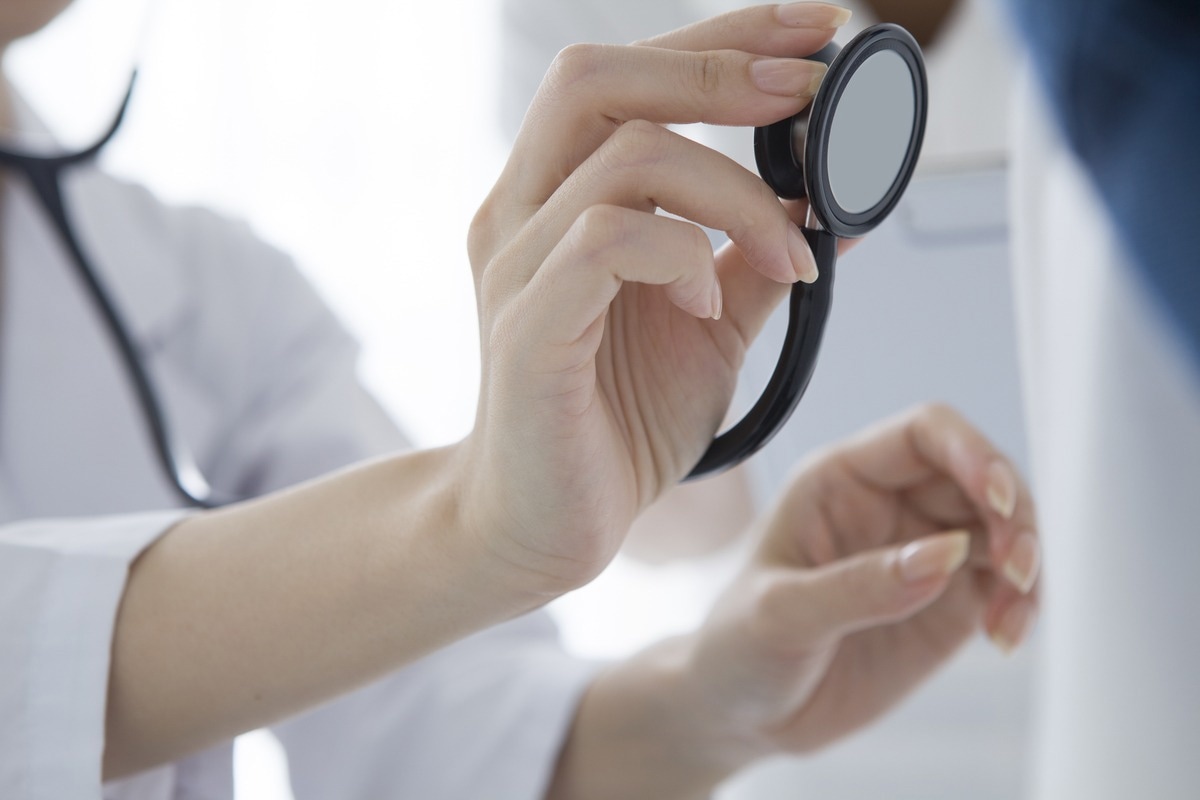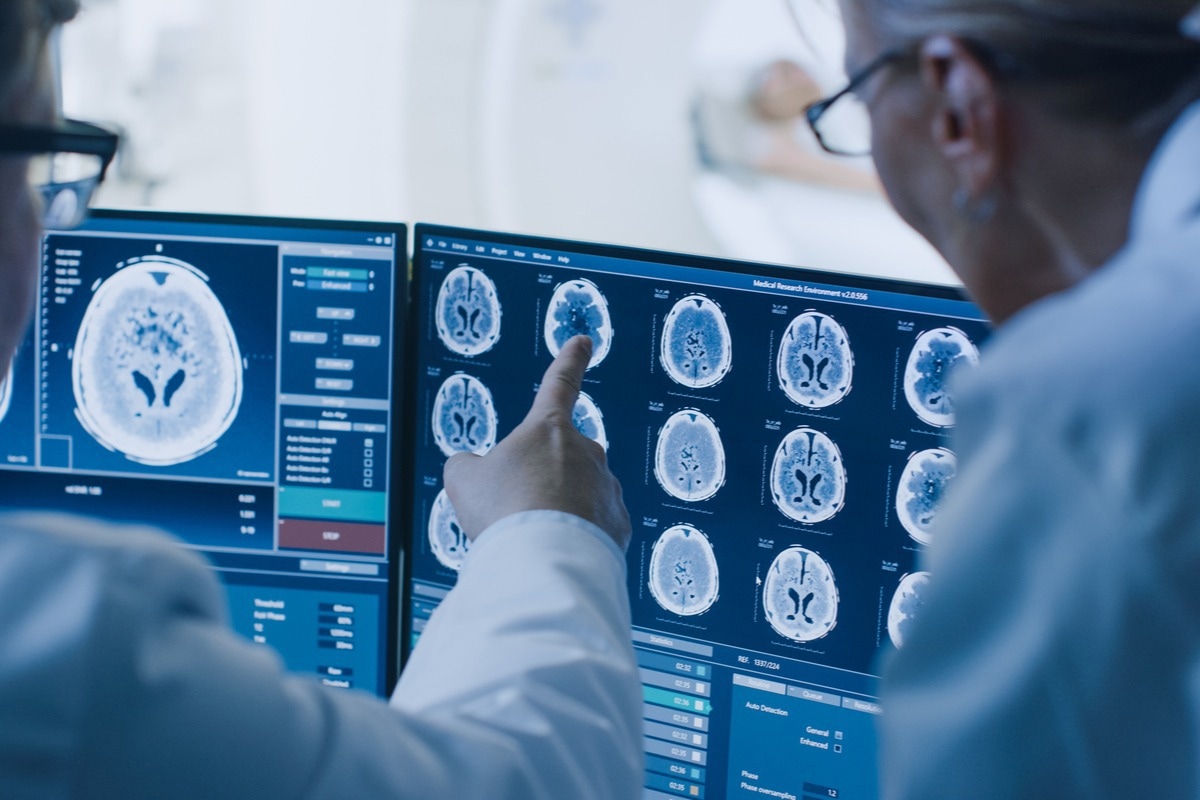What is overdiagnosis?
Why overdiagnosis happens
Adverse effects of overdiagnosis
Prevention of overdiagnosis
References
Further reading
Overdiagnosis is one of the most harmful and costly problems in modern healthcare.”
This statement by a prominent researcher encapsulates the level of danger posed by overdiagnosis.
 Image Credit: Monkey Business Images/Shutterstock
Image Credit: Monkey Business Images/Shutterstock
What is overdiagnosis?
Overdiagnosis refers to the diagnosis of a medical condition that would not have produced any symptoms or problems if left undiagnosed. The incidence of overdiagnosis has risen sharply with the use of screening tests nowadays, because of the importance laid on detecting potentially deadly or curable illnesses before they produce symptoms. Some classic examples include prostate or breast cancer, which can be caught early and have excellent cure rates at early stages.
The unexpected fallout of this has been the detection of other abnormalities that are not going to create symptoms if left untreated. Overdiagnosis could include, for instance, the detection of indolent tumors that typically grow so slowly that the individual dies of old age without ever knowing about the presence of the tumor.
Once the tumor is detected, however, both the patient and the physician face a dilemma. Patients typically feel distressed at doing nothing about the tumor, even if they are reassured that it will most probably never be aggressive. In such cases, a “harmless” tumor will be treated unnecessarily, which is called overtreatment, often involving therapies that have their own risks or significantly reduce the quality of life.
An Australian study showed that one in five common cancers was detected by overdiagnosis, using over three decades of data. This means that over 11,000 and 18,000 women and men were told they had cancer when they actually had incidental tumors.
Other conditions that are typically overdiagnosed include aneurysms and spinal disc abnormalities.
Why overdiagnosis happens
Natural course unknown
The real problem with many medical tests should be obvious by now. While they pick up abnormalities with fair accuracy, there is not enough knowledge to make reliable predictions of the course of the disease in a number of situations. Many early-stage prostate cancers fall into this category, prompting patients to choose a “watchful waiting” approach to their tumor rather than a full-fledged course of cancer treatment.
This danger is exemplified by evidence that shows a large increase in the detection of early cancers or small aneurysms of the abdominal aorta, but without corresponding reductions in advanced disease or mortality.
Incidental findings
The large number of very sensitive screening tests is another recent development that fosters overdiagnosis. This has led to the incidental detection of many abnormal metabolic, cardiovascular or tumor parameters while the patient is being tested for some unrelated symptoms, or during the course of a routine health checkup. While some of these might have produced a serious outcome, most would go unnoticed until the patient’s death from other causes.
Overdefinition – widening diagnostic criteria
Another form of overdiagnosis occurs when people are induced to consider ordinary experiences as medical conditions, a phenomenon called overdefinition of disease or medicalizing symptoms. This involves putting abnormalities that would never progress or never cause harm under a definition of disease. This is the result of using a lower threshold for the diagnosis of disease than is established to require treatment that would actually improve the patient’s health or longevity.
An example of this is lowering the definition of hypertension in adults to a systolic blood pressure of >130 rather than >150 mm Hg. Another is the lowering of the threshold for diabetes over the last few years. This would create a large population of hypertensives or diabetics, but may not reduce cardiovascular events or mortality correspondingly. Instead, the treatment for these newly diagnosed conditions may pose more risks and cause more emotional, financial, and physical pain than the disease risks themselves.
Risk vs disease
This points to a deadly lack of clarity as to the differences between the risk of disease and having the disease itself. Identifying possible risk factors for an illness, and diagnosing the patient as being at high risk for that event or actually having the illness itself, are quite different outcomes, and should not be confused.
Overdiagnosis is extending to the field of genetic screening, whereby people who have one or more genes associated with a condition may live in fear of developing it or take medical measures to prevent it, even though the chances are very low that they would ever suffer such an outcome.
As another researcher puts it,
[The] end result of these diagnostic and therapeutic intervention is that healthy people with either mild problems or with risk factors for the disease are classified as sick.”
 Image Credit: Leonardo da/Shutterstock
Image Credit: Leonardo da/Shutterstock
Fear
One driving factor behind such over-definition of diseases is fear, both the physicians’ fear of missing the diagnosis and endangering the patient, or rendering oneself liable to legal penalties; and the patient’s fears of becoming sick or dying.
Financial incentives
Such fears arise as a result of disease mongering. This is carried on by those who produce the drugs that are used to treat diabetes, hypertension and the like; healthcare facilities that operate for profit; diagnostic centers – the aim being to expand the market for their products and thus turn a tidy profit. Disease mongering promotes the tendency to view disturbing but occasional symptoms, which are quite common, as a symptom of some hidden condition.
Insomnia, uterine bleeding, and brain fog are just three instances of such symptoms, which are rarely worrisome but can be seized upon by those who wish to make a financial profit out of them as evidence of severe mental or physical illness. In reality, only with severe or debilitating symptoms would these individuals benefit from further diagnosis or treatment.
On the other hand, overdiagnosis should not be confused with false positives, which are inevitable with any test, no matter how carefully performed. Overdiagnosis may lead to overtreatment in these cases, but this can hardly be helped provided the testing process is carried out with due diligence.
Adverse effects of overdiagnosis
Overtreatment
The greatest risk of overdiagnosis is the overtreatment that often follows it, exposing the patient to unnecessary and dangerous therapies for no observable benefit. In fact, Dr. H. Gilbert Welch, a professor of medicine and a specialist in the relationship of media with medical practice, comments,
As we recently learned in diabetes, while trying to move people with mildly elevated blood sugars towards “normal,” the death rate increased.”
In another instance, the incidence of early and precancerous breast lesions in women more than doubled between 1976 and 2008, but late-stage cancer fell only from 102 to 94 per 100,000 women at this time. In other words, a third of these women were subjected to potentially disfiguring, painful and dangerous therapies without any prospect of lengthening their life thereby.
Emotional harm
Being told that one has a tumor or is at risk for a stroke or heart attack can cause feelings of distress, fear and uncertainty, even though the individual is in good health. The labeling of the individual as someone with a disease just because of a number on a test performed more or less incidentally can leave behind a permanent sense of illness and of the need to take medication.
This psychological harm, and the harm done to the family members who now feel that they have a family history of the disease, is an important determinant of future quality of life.
Financial harm
The cost of overdiagnosis and overtreatment also reflects in the vast sums being used to treat these healthy people while depriving the sick of the treatment they desperately need. Some scientists have calculated that billions of dollars are spent each year in the USA alone, on treating the overdiagnosed.
Moreover, health insurance costs will go up, putting it out of reach of people who actually require this benefit to access adequate treatment.

 Related: What is a Diagnosis?
Related: What is a Diagnosis?
Prevention of overdiagnosis
Overdiagnosis is hard to avoid, of course, unless one avoids testing and screening altogether. However, screening does have clear-cut utility, provided the patient knows what the test is for, and whether the predictive benefit outweighs the risk of overdiagnosis.
To prevent overdiagnosis, or at least bring it down to minimal levels, primary care needs to be strengthened, as these doctors see patients with early disease and are well equipped to document its natural history in many cases. Health professionals themselves need to be educated about the difference in survival following the diagnosis of an incidental condition, vs prolonging survival following the diagnosis of an actual medical condition.
This will help doctors decide and communicate to their patients at what level it would be wise to intervene, in terms of the actual reduction in risk of severe health events as a result of the intervention. The relationship between the doctor and patient is of paramount importance here, as obviously no doctor can predict the course of events for any given patient.
Indeed, the natural history of most diseases needs more careful documentation, including the outcome of watchful waiting when the abnormalities detected are small or early. Moreover, diagnostic terms should be carefully defined and standardized with due attention to the meaning they carry in the minds of other healthcare professionals and of the patients themselves.
 Image Credit: Gorodenkoff/Shutterstock
Image Credit: Gorodenkoff/Shutterstock
Screening tests should be scrutinized to make sure that they actually reduce the mortality rates of the disease without increasing mortality and morbidity unrelated to the primary condition, by causing other severe complications of treatment. Most such tests do not, in fact, reduce the actual number of diagnoses of advanced cancer, picking up mostly indolent non-aggressive cancers that would never have caused the patient any problem.
The data for each of these tests must be carefully analyzed and presented in an evidence-based format so as to promote high-quality decision-making in the clinical context. The development of accurate and cost-effective molecular tests that will help distinguish aggressive tumors, for instance, from indolent or incidentally detected tumors, would be a big step towards making screening a truly life-saving approach. Such research is urgently needed.
Any ‘moving of the boundary stone’ with relation to disease definition must be based on sound evidence, keeping away from the tendency of pharmaceutical firms and clinical research firms to sell their products for their own profit rather than the good of the patients.
In fact, recently government recommendations have moved away from making prostate cancer screening a standard test for older men, based on the evidence that not only does this not save lives but leads to major complications including pain, incontinence, and impotence as a result of the unnecessary radical surgery or radiation therapy with which these so-called cancer patients have been treated with.
Thus, overdiagnosis could be too much of a good thing.
[Overdiagnosis] includes too much screening of asymptomatic individuals, too much investigation of those with symptoms, too much reliance on biomarkers, too many quasi-diseases, too much diagnosis, often leading to too much treatment, too many adverse reactions, and too much monitoring. And too much healthcare implies too little effective healthcare.”
References
Further Reading
Last Updated: Jun 28, 2022